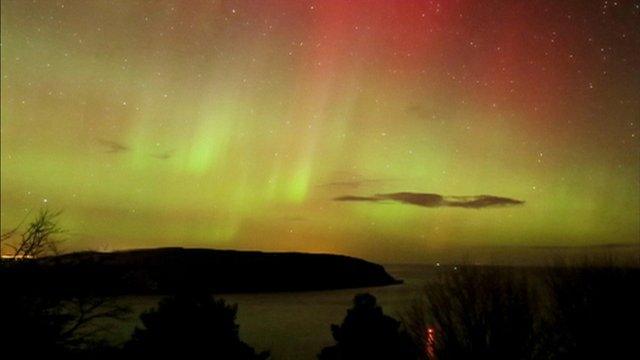In search of the Northern Lights
- Published
Aurora borealis
The Northern Lights are one of nature's greatest wonders but the magical spectacle is also highly elusive.
Ramsay MacMahon has dreamt of seeing the aurora borealis since he read Philip Pulman's book Northern Lights as a child.
In the novel, Pulman writes: "The sight filled the northern sky. The immensity of it was scarcely conceivable.
"As if from heaven itself, great curtains of delicate light hung and trembled, pale green and rose pink and as transparent as the most fragile fabric."
Despite being enchanted by the lights, Ramsay had never managed to see them. He was determined to fulfil his desire.
"I will see the lights that have been hidden from me all my life," he told BBC Alba documentary In Search of The Northern Lights.
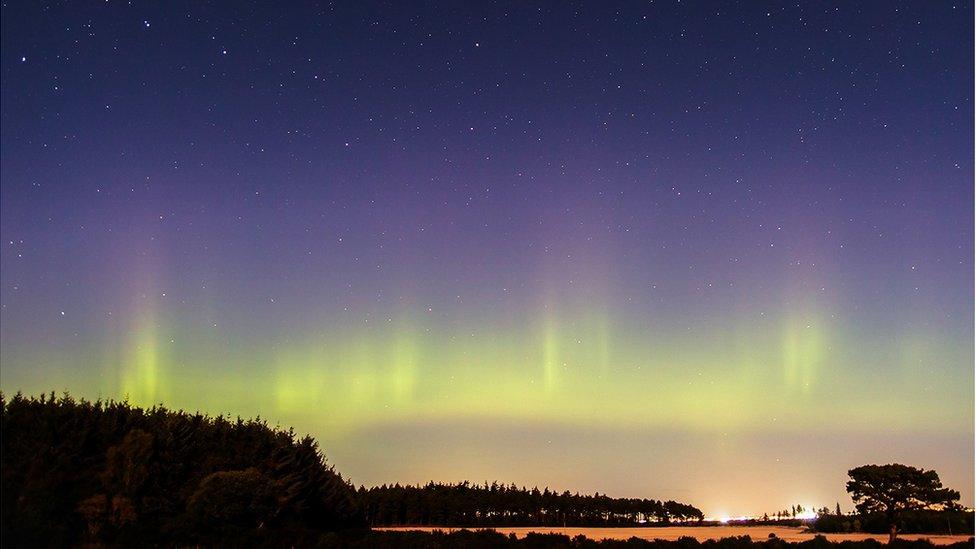
It is possible to see the Northern Lights in Scotland, like here over Lossiemouth
Winter is the best time of year for seeing the aurora because the nights are long, dark and cold.
The lights appear when charged particles from the sun, called the solar wind, interact with Earth's magnetic environment.
This accelerates electrons into the atmosphere at the north and south poles. There they collide with oxygen and nitrogen which creates light.
This natural light display is predominantly seen in high-latitude regions around the Arctic but it is often visible in Scotland if you know when and where to look.
In a his first bid to see the lights, Ramsay downloaded an app to his phone, which alerted him to the best conditions in his home country.
He drove to Milavaig on the west coast of Skye, a spot popular with aurora watchers.
It is a remote area with views to the north but, as it often the case in Scotland, a low mist and cloud obscured any view.
"There is not even a star, let alone an aurora," Ramsay says.
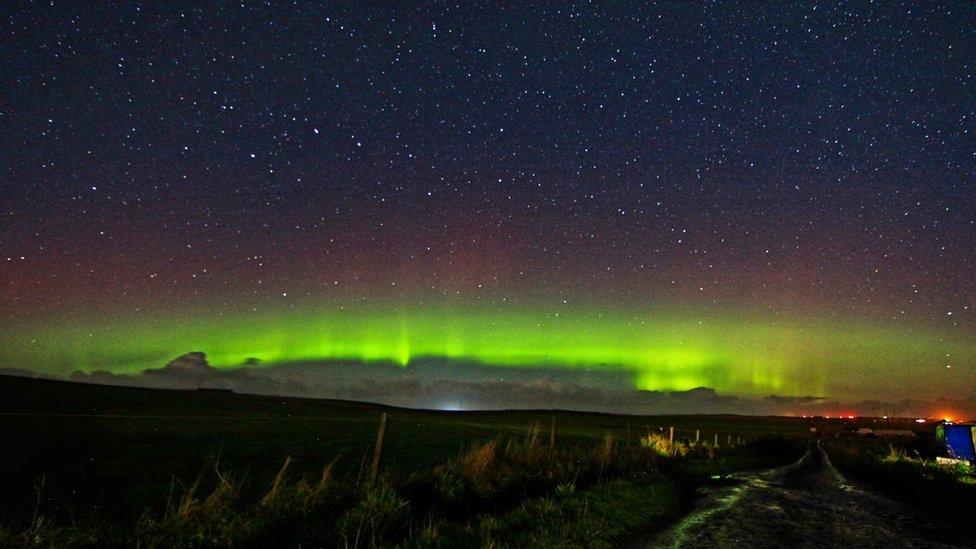
The aurora seen in Orkney in October
Andy Stables, who lives on Skye, developed one of the aurora watch apps.
He says: "When you get a really good aurora, it is absolutely fantastic. It is a stunning thing to see in the sky."
According to Andy, the best one ever was on 27 February 2014.
"That was at the peak of the solar cycle," he says. "It was the strongest aurora ever.
"The aurora was absolutely massive and it was absolutely everywhere. It was mind-blowing."
"We have never had one quite as good since but we have had some pretty spectacular ones."
Mr Stables says that to the naked eye the aurora mostly appears white and very faint. It is picked up better with a camera.

Ramsay travelled to Norway to try to see the Northern Lights
"Most people are really disappointed when they see it because it is not what they expect from the glorious technicolour photos," Andy says.
"But if you can work a DSLR camera and get the settings, it is absolutely amazing.
"It is like seeing in the dark. You can take a photograph and look at the viewer on the back of the camera and there it is. There is no trickery or photoshop.
"Once you have done it, it is very addictive."
In order to boost his chances, Ramsay set off to Norway at the start of the year.
He joined other aurora spotters on a trip organised by cameraman Alister Chapman.
They all travelled to the municipality of Karasjok in the far north east of the country, where the temperatures regularly drop to -30C and the sun only rises for a few hours a day.
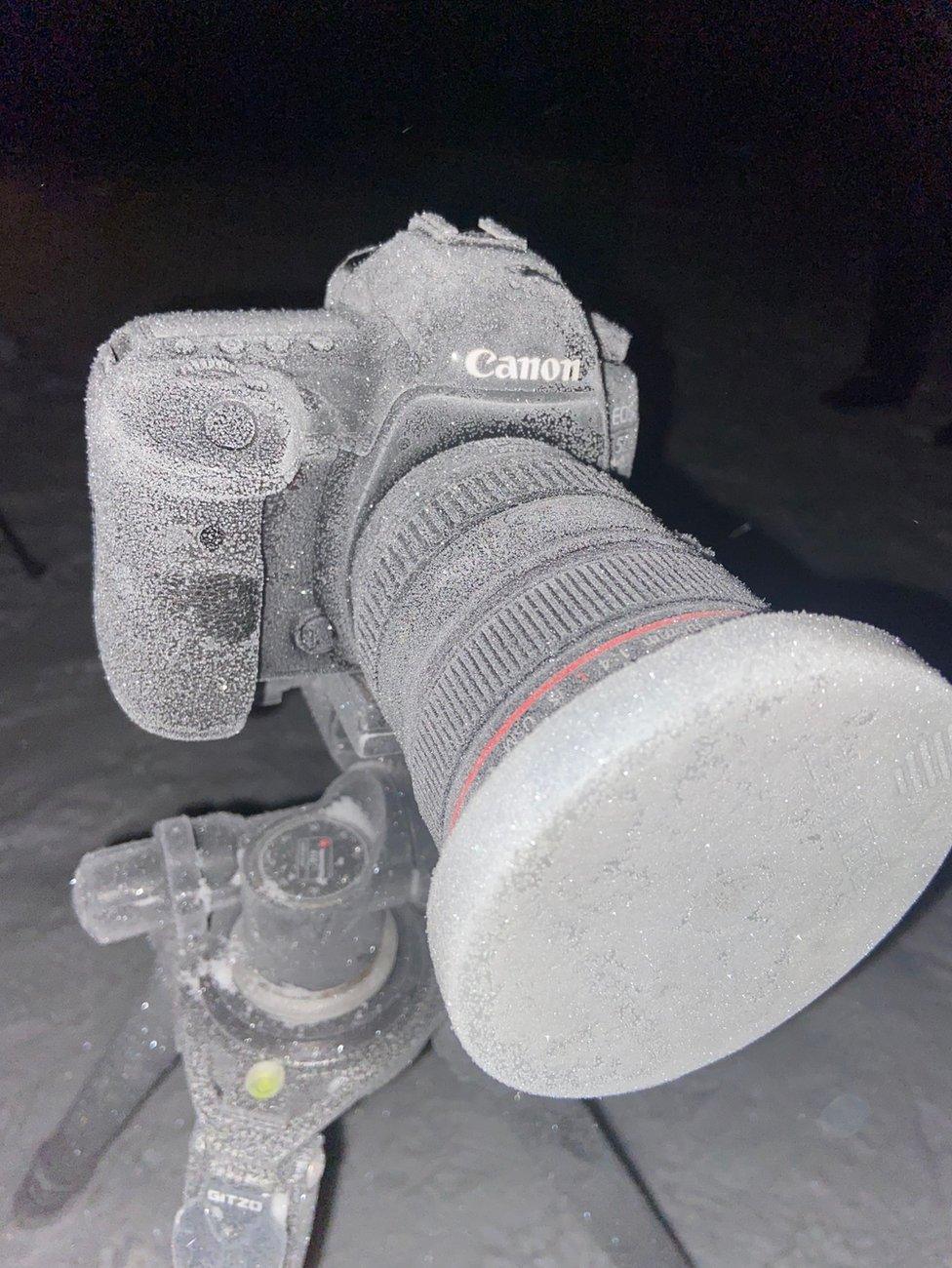
At temperatures of -16C and falling, Ramsay could not stay outside for long

From there they trekked through the "snowy desert" to their destination - Ravnastua.
When they arrived the snow was 2ft deep and continued to fall, meaning there was no chance of an aurora.
The next day the sky cleared and the group readied themselves.
At 5pm it was pitch black. The group wore red head torches so they didn't disturb night vision of the skies.
Ramsay changed the setting on his camera and began to look for signs of the aurora.
At temperatures of -16C and falling, he could not stay outside for long and after a while retreated indoors to see if a better view would emerge.
After hours of watching and waiting, he went to bed, only to miss a display, recorded on Alister's camera.
Although he witnessed some amazing sunrises, Ramsay went three days without seeing the aurora.
On his last night, after more hours of waiting, he finally witnesses a tell-tale green band.

Ramsay finally got to see his aurora
"Adrenaline is running through me because I see something I have never seen before," he says.
"I have never seen anything like it."
There is a clear bow of aurora. It is not dancing, the speed and activity is not that great but it is an aurora.
Nevertheless Ramsay says Philip Pullman was absolutely right.
"The immensity was scarcely conceivable," he says.
Mach a Seo: Na Fir-chlis/In search of the Northern Lights is on BBC Alba on Saturday 26 December at 21:00.
Related topics
- Published29 September 2020
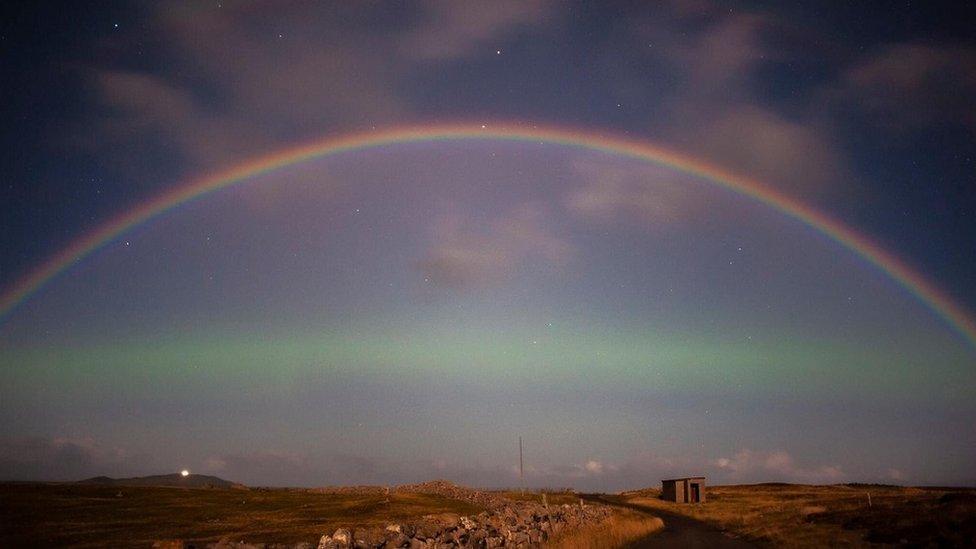
- Published1 February 2019
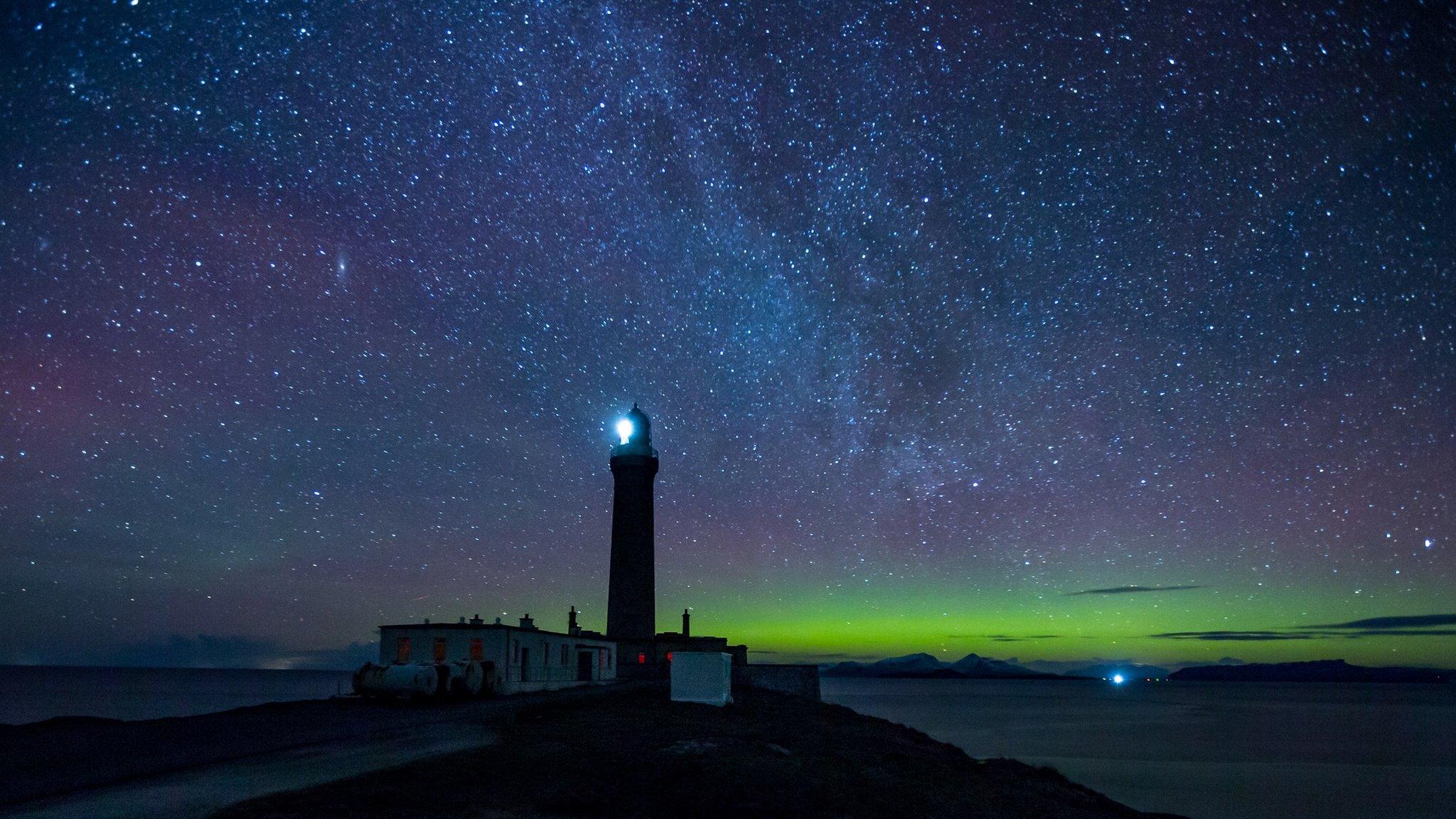
- Published28 February 2014
